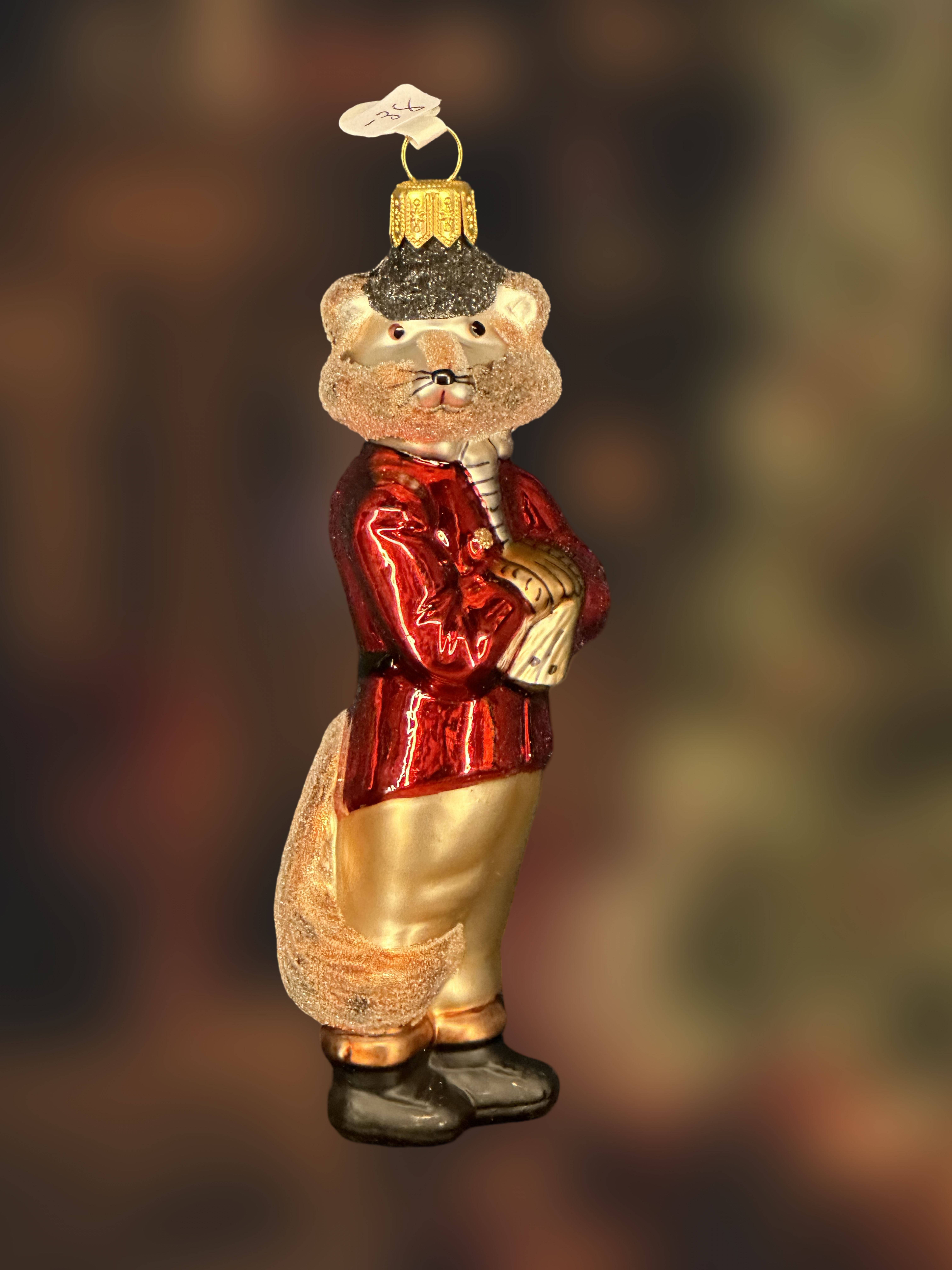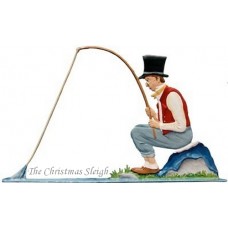The Fisherman Carl Spitzweg Standing Pewter Wilhelm Schweizer
Der Fischer
"The Fisherman"
by Carl Spitzweg
Size:
4-1/4" x 2-1/2" tall.
11 cm x 6 cm tall.
The unparalleled Wilhelm Schweizer of Bayern hand painted pewter!
Known as Zinn in Germany, these pewter ornaments, whether standing or hanging pewter, are truly heirlooms in the making. Hand made and hand painted by the talented artisans of Schweizer Pewter of Germany, they are made today precisely the same way they were made hundreds of years ago. And in the same place! In the little Bavarian village of Diessen am Ammersee.
The standing and hanging ornaments are hand painted on both sides. The window and wall hangings are painted on one side.
Please note that since these are all hand painted, the same mold may appear different from the ones we show. That's the charm of Schweizer!
Begin your family tradition now, future generations will thank you.
Hand Painted German Zinn Pewter Ornament.
Made by artist family Wilhelm Schweizer in Diesssen am Ammersee Bayern Bavaria Deutschland.
...Carl Spitweg "Der Angler"...
.................................................. ............
Carl Spitzweg
Born February 5, 1808
Died September 23, 1885
Unterpfaffenhofen, Munich.
Nationality German Field romanticist painter, poet Movement Biedermeier
Carl Spitzweg (February 5, 1808 – September 23, 1885) was a German romanticist painter and poet.
He is considered to be one of the most important artists of the Biedermeier era. He was born in Unterpfaffenhofen as the second of three sons of Franziska and Simon Spitzweg.
His father, a wealthy merchant, had Carl trained as a pharmacist. He attained his qualification from the University of Munich, but while recovering from an illness he also took up painting.
Spitzweg was self-taught as an artist, and began by copying the works of Flemish masters. He contributed his first work to satiric magazines.
Upon receiving an inheritance in 1833, he was able to dedicate himself to painting.
Later, Spitzweg visited European art centers, studying the works of various artists and refining his technique and style; he visited Prague, Venice, Paris, London, and Belgium.
His later paintings and drawings are often humorous genre works. Many of his paintings depict sharply characterized eccentrics, for example
The Bookworm (1850) and The Hypochondriac
(c. 1865, in the Neue Pinakothek, Munich).
His paintings inspired the musical comedy Das kleine Hofkonzert by Edmund Nick.
He is buried in the Alter Südfriedhof in Munich.
Write a review
Your Name:Your Review: Note: HTML is not translated!
Rating: Bad Good
Enter the code in the box below:





